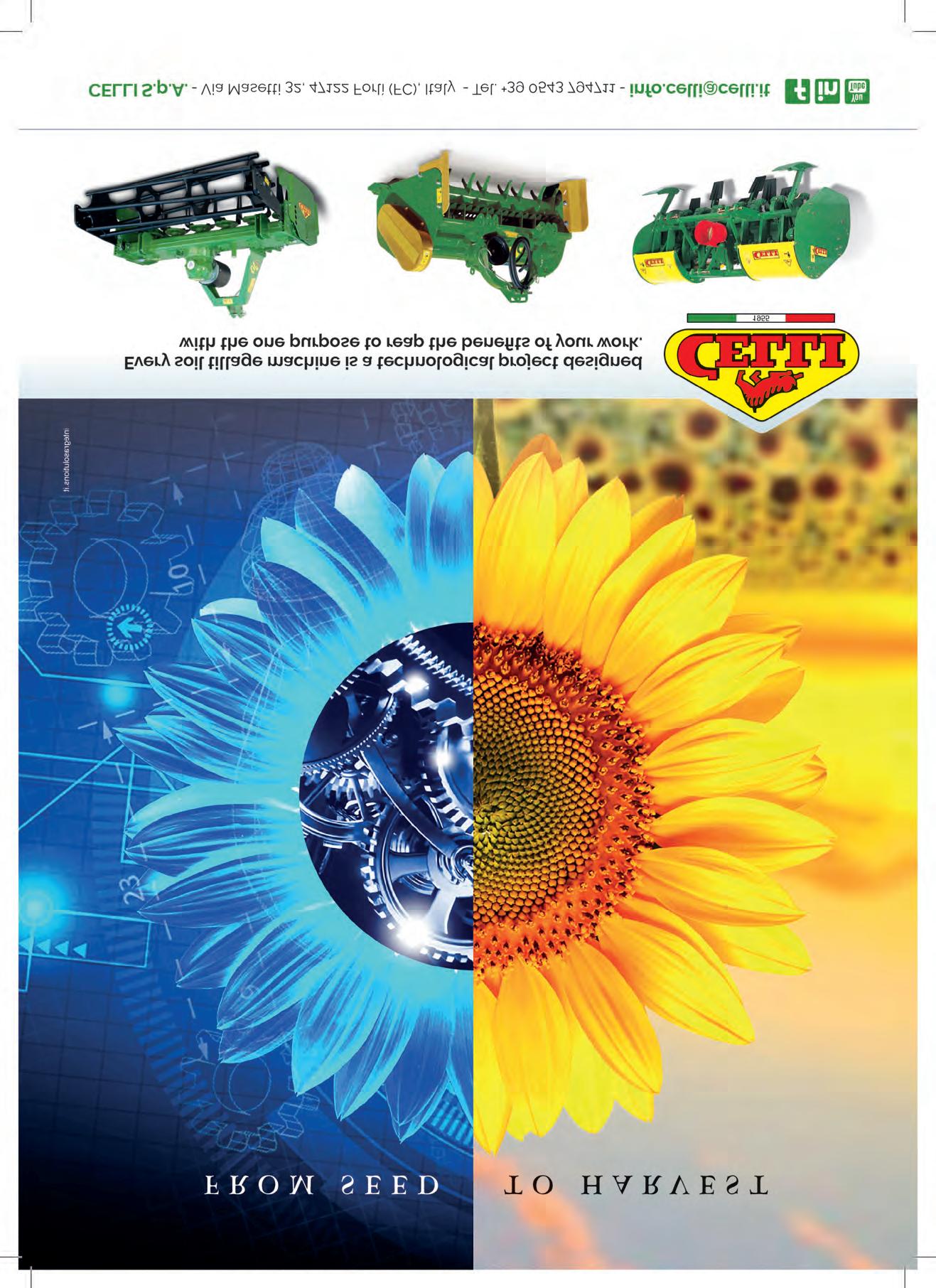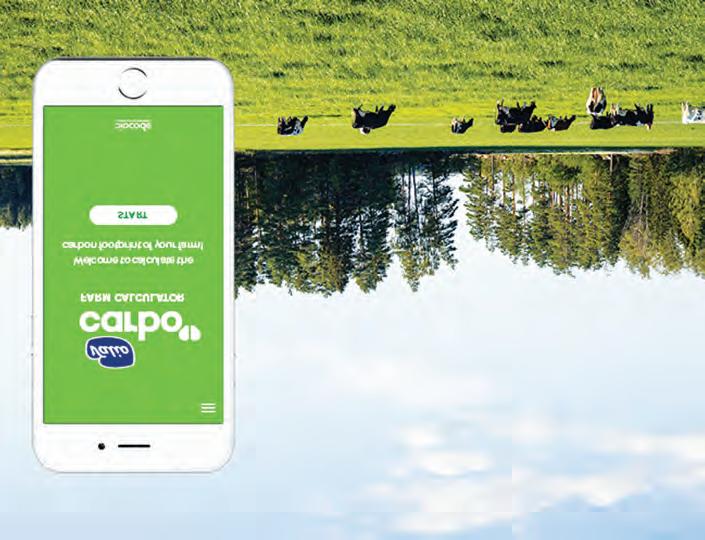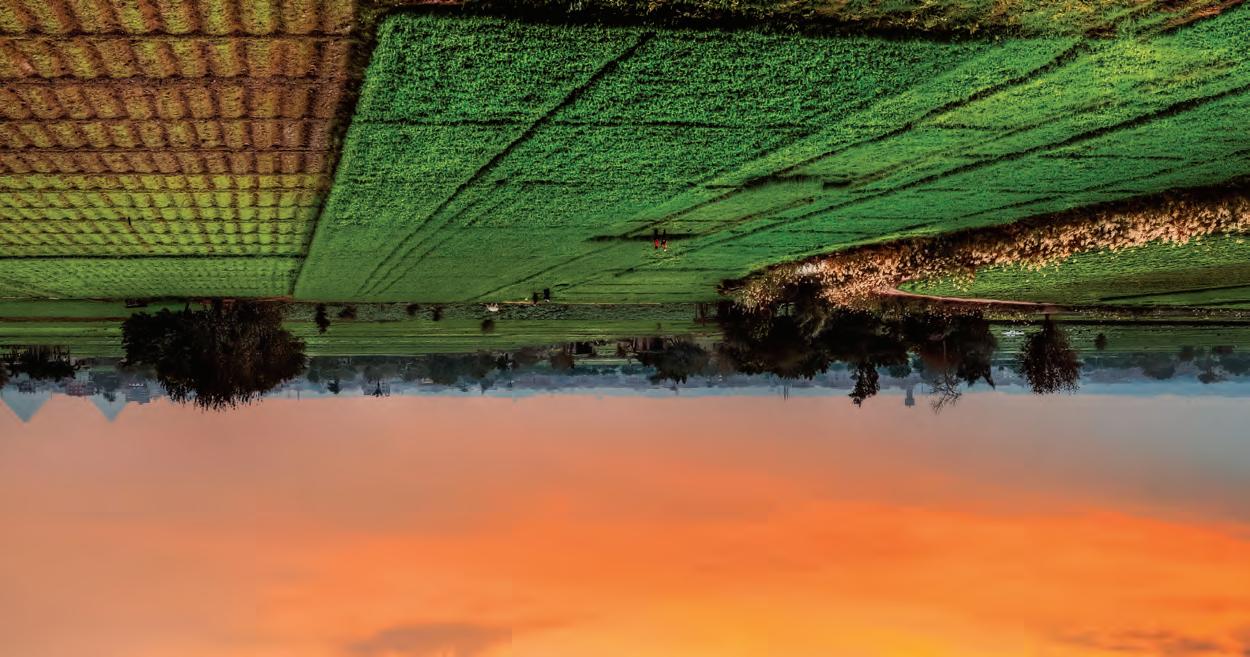
28 minute read
Equipment
Smart technological solutions are paving the way for improved quality of life for the rural population of Africa.
Digital ecosystems improving lives of smallholder farmers in Africa
TECHNOLOGICAL INNOVATIONS FROM cloud computing, robotics, big data, artificial intelligence (AI), IoT to sensor technology and selfdriving tractors, are contributing in a big way to increase efficiency, improve farming management and optimise farming processes. In the African continent, the impact of various technological developments are being experienced.
There are several initiatives in Africa that are helping to bring the benefits of digital technologies to the rural farmers and others.
Mobile phone applications As mobile phone usage spreads rapidly across sub-Saharan Africa, the revolution of digitalisation for agriculture in Africa is being fuelled. Entrepreneurs and development organisations are making use of mobile phones to create applications for profitable ventures in areas including agriculture.
Space-related programmes for agriculture Applications are helping Africans work towards Sustainable Development Goals (SDGs), with satellite data already in use by Kenyan maize farmers to monitor crop pests and reduce losses. This Pest Risk Information Service (PRISE), which is backed by the UK Space Agency and the Global Challenges Research Fund, is already operational in Malawi, Rwanda and Zambia. The objective is to identify pests like maize stalk borer before dispatching text message alerts to Plantwise plant doctors. These officials pass on relevant information to farmers in the field. Doctors pass on advice via their network of plant clinics PRISE also aims to empower input suppliers to predict demand more accurately and provide suitable products where they are most urgently needed. Insurance and financing companies should have a more detailed risk assessment picture.
A similar project, AfriCultuRes (supported by the European Commission and the Group on Earth Observations), extends the concept to improved monitoring of water availability and productivity, soil moisture detection and crop water requirements assessment and, as well as livestock grazing and rangeland monitoring. AfriCultuReS aims to achieve market readiness quicker than the typical 10 years for this type of technology.
Digital services boost rural financing opportunities To promote meaningful financial inclusion, the UN Capital Development Fund (UNCDF) is engaging with the rural population.
More than 75 per cent of Ugandans are employed in the agricultural sector.
In the context of rural digital finance, the concept of a “booster team” is a dedicated team that supports one or several organisations to distribute their products and services to the last mile population. These products can range from financial services, energy products, digital and financial literacy content or any other sectors.
The booster teams are deployed to rural areas to simultaneously register customers, sell mobile handsets, recruit agents, educate value-chain stakeholders on the benefits of a digital payment ecosystem and train users on the operation of a mobile phone and mobile money. The basic structure of a booster team is detailed in the report.
The pilot began in Uganda in 2018 and evolved organically through three main phases. It helped UNCDF to analyse usage data and identify additional gaps and improve approaches for the hardest-toreach demographics.
This approach significantly increased penetration in rural areas. These hard-toreach areas often have low population densities, poor roads and scattered economic activities. Nevertheless, UNCDF has made one of the most concerted efforts in the industry to determine what it takes to breach the rural frontier and to make sure no one is left behind in the digital era.
Digital ecosystems for utilities Creating a digital ecosystem in rural areas is crucial to provide access to essential utilities such as water and power to the people, thus improving the quality of life
This requires collaboration with local suppliers if long-term success is to be achieved, according to Jeremy Potgieter, regional director for Africa at Eseye, a global IoT cellular connectivity and hardware company.
According to Potgieter, people living in the rural areas of developing countries face a range of challenges that threaten to isolate them from the benefits that are enjoyed by the rest of their populations.
Two major examples include accessing essential utilities such as water and power, as well as the challenges associated with accessing financial services and payment credit. “In an urban area, utilities are
delivered from a central source. In rural areas, however, it’s not quite as simple. To achieve sustainable, long-term solutions, these utilities must be delivered locally.”
He said that the economics of delivering electricity to small villages of only 50 people, for example, make them far more difficult to implement. It is here that with technological developments in areas such as water purification or solar energy, this can be overcome.
IoT is contributing to drastically improve the quality of life in rural areas.
“We have seen some great examples of how IoT has transformed the capabilities of these rural areas. With locally generated electricity, for example, paving the way for the emergence of phone-charging shops and even stories of people charging entry to their homes to allow visitors to watch major sporting events. The supplier of the equipment is allowed to manage and maintain their assets because of the integration of IoT technology, which provides them with constant performance updates,” commented Potgieter.
Central to the success of any IoT project in a developing country is its ability to be globally connected and highly available.
Image Credit: Adobe Stock

Technologies such as IoT help improve the quality of life in rural areas.
To achieve sustainable, longterm solutions, these utilities must be delivered locally, Jeremy Potgieter, regional director for Africa at Eseye.
Potgieter noted that it must be straightforward for non-IoT experts to construct on a ground level.
At the point of deployment, Eseye can securely and quickly enter a device into the cloud. This helps locals who are setting up the IoT equipment to easily achieve quick configuration.
“As a result of this approach, Eseye is experiencing some success in developing countries, with life-changing projects through partnerships with suppliers such as SolarNow and eWater.”
The digital revolution in agriculture calls for more sustainability and thus turns to the environment. There is greater emphasis on the responsible use of the planet's resources, animal welfare, ecological breeding methods and environmentally friendly cultivation. There are several challenges related to the use of digital technologies in rural Africa. Creating greater awareness and providing adequate training to help the rural people feel confident in using the equipment, becomes important. Concerted efforts are needed by government and private organisations in making available the benefits of technology to the rural population in Africa. h

The combine harvester models of Case IH continue to help farmers around the world to optimise production and efficiency.
Case IH Axial-Flow harvesters combine quality and performance
CASE IH IS making high technology grain harvesting affordable and attainable for more farmers and contractors across China, Russia, Uzbekistan, Kazakhstan, as well as parts of Africa and South East Asia with three Axial-Flow 4000 Series combine models; the 4077HD, 4088HD and 4099 available, or soon to be available in these countries.
Compact dimensions, operator comfort and advanced features are combined with high harvesting capacity, thorough crop threshing, low grain losses, gentle grain handling and unsurpassed sample quality. Since their launch in the USA in 1977, these benefits are characteristic of Case IH Axial-Flow single-rotor technology.
“The Axial-Flow 4077HD, 4088HD and 4099 are the most productive combines in their class,” said Massimiliano Sala, product manager for combine harvesters in Asia, Middle East and Africa.
“Their simple design allows them to be adapted quickly to suit changing harvesting requirements, field conditions and crops,
“Axial-Flow 4000 Series combines are easy to use, so even operators who are new to the Axial-Flow concept can quickly learn how to harness their full potential,” said Massimiliano Sala, product manager for combine harvesters in Asia, Middle East and Africa.
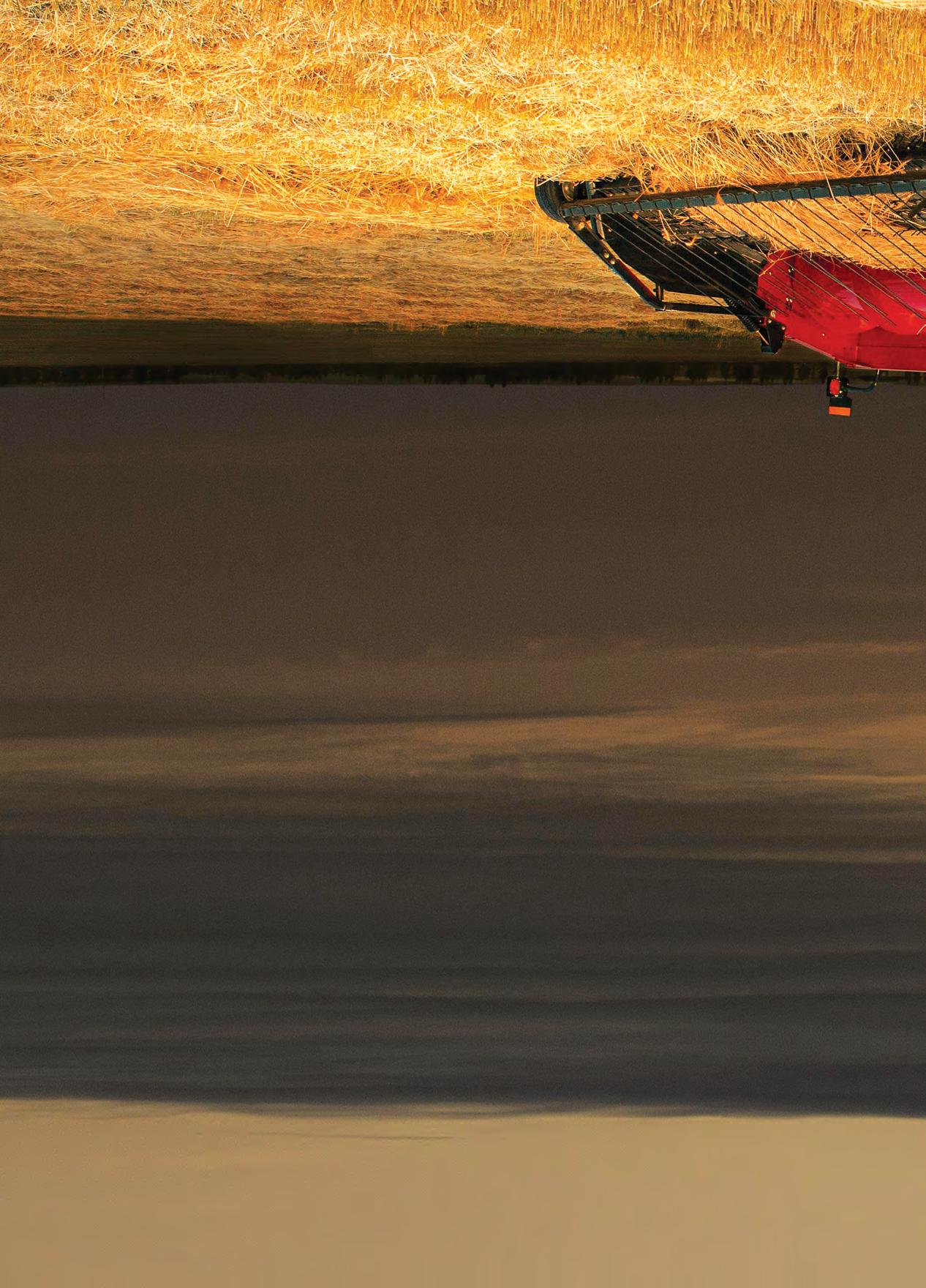
making them the perfect choice for contractors and farmers with multiple crops.”
“Owners can move from corn, to wheat, to sorghum, to rice in hours, compared with almost two days for conventional or hybrid combines, so more time is spent harvesting and seasonal output is increased.”
“Axial-Flow 4000 Series combines are also very easy to use, so even operators who are new to the Axial-Flow concept can quickly learn how to harness their full potential,” said Sala.
Designed in the USA, Axial-Flow 4000 Series combines harvesters are built at CNH Industrial’s manufacturing facility in Harbin, China, the largest of its kind in the region. It produces a range of tractors, combine harvesters, headers, and other equipment for Case IH, and other CNH Industrial brands.
Last year in May, the plant achieved bronze status in the World Class Manufacturing (WCM) programme proving CNH Industrial’s commitment to the pursuit of world-class manufacturing excellence.
Product enhancements All three models are powered by FPT Industrial 6.7-litre, six-cylinder, in-line engines which meet Tier III emission standards, are turbocharged and air-to-air after-cooled to provide proven, dependable performance in all conditions.
All engines provide excellent torque characteristics, deliver optimum fuel
consumption and transmit their power through a three-speed hydrostatic transmission, with a 500-litre fuel tank featuring on all 4000 Series models.
The grain-on-grain threshing action that the Axial-Flow rotor provides limits grain losses through more effective separation and ensures that grain which goes into the tank is of the highest quality to generate maximum value.
All models feature a Cross Flow cleaning system which uses chevron-shaped fins to create a uniform, high volume of air, just enough to achieve the cleanest possible grain sample but minimise grain loss. Unlike conventional systems, air is distributed evenly across the underside of the sieves to eliminate air pockets, while fan speed is fully adjustable to cater for finer-seeded crops, resulting in higher cleaning capacity.
Large grain tanks feature on all models to maximise the time spent harvesting. The 4077HD is fitted with a 5000-litre grain tank and 4.1m auger which unloads at the rate of 63 I per second, while the 4088HD and 4099 models have 6000-litre and 6500-litre grain tanks, together with 5m augers which unload at the same rate.
To optimise their performance potential, Axial-Flow 4000 Series combines are fitted with a spacious, comfortable cab which incorporates more than 3.74 square metres of glass area, providing the operator with a panoramic view and excellent visibility over the header.
Operator comfort is enhanced by the Apillar monitor, ergonomic control layout and suspended, individually adjustable seat, together with a high-capacity air filter and the standard heating/ventilation system. Air conditioning can be specified as an option to provide the ultimate in-cab environment.
Axial-Flow combines incorporate fewer moving parts than either conventional designs or more complex rotary and hybrid machines, so they are simpler to operate, more reliable and less costly to maintain. h
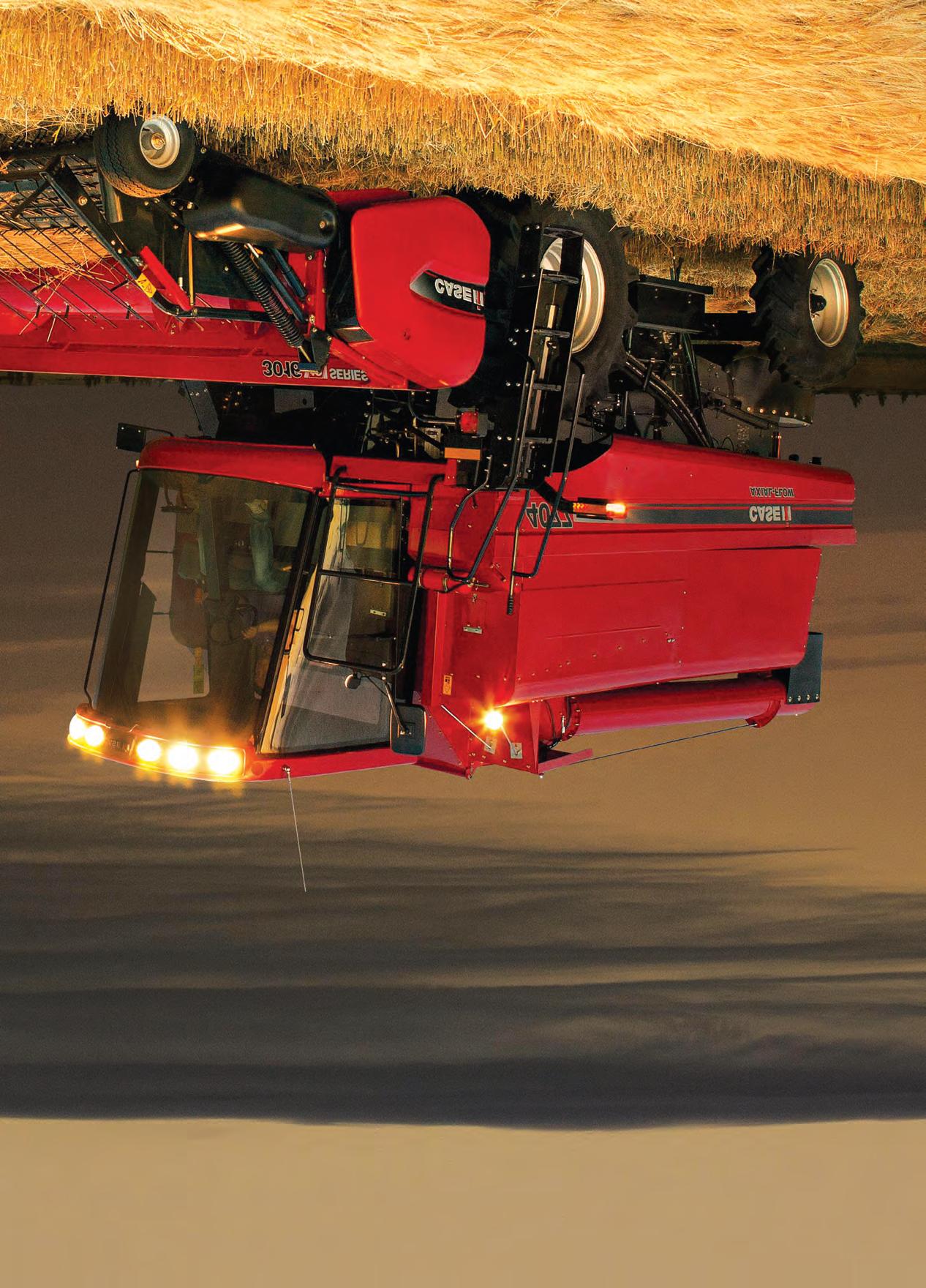
Martin Smith, technical service director, Middle East and Africa, Evonik, discusses the company’s latest precision livestock technology enabling optimal poultry production.

Digital insights driving poultry management
How is Porphyrio helping the poultry business deal with challenges such as disease management and consumer demand for greater transparency? By collecting all available data on performance, feed consumption, water consumption, veterinary intervention, customers rapidly build up a picture of the unique characteristics of their business. This is then used to create personalised performance profiles, down to an individual house level. Using these standards, clients get automated early warnings of deviations; which means timely interventions can be planned. So disease impact is reduced, use of medicines is reduced, and a complete record of flock health is maintained.
By including crucial elements of production such as feed, climate, health and welfare, Porphyrio enables the poultry business to control performance in accordance with its long-term strategy.
How is the software enabling Evonik to stand out among others in precision livestock farming? Evonik is in the unique position of having unrivalled expertise in animal nutrition and gut health maintenance; products to support both of these important components in health and efficient livestock production; and now tools to help customers monitor animal performance, so that Evonik expertise and products can help in maintaining productivity and profitability. At the same time, use of a combination of these products and tools has consistently resulted in profound reductions in environmental impact.
Precision livestock farming technologies from sensors to big data can help farmers improve productivity and decrease costs, while at the same time reduce their environmental footprint. Ultimately, moving to the next stage of optimisation within the boundaries of sustainable production requires a better understanding of the needs of the individual animal, along with a further integrated approach to farm management. Precision livestock farming goes beyond just gathering data. It combines sciencebased know-how with proven amino services, and innovative nutritional and health concepts. These are all embedded into specific digital solutions allowing for a better understanding of the status of the animal.
What has been the success of the technology in bringing customised, creative solutions for businesses? Insight from Porphyrio is so flexible it produces a tailormade solution for each and every client. This in turn allows collaboration with Evonik to formulate nutritional solutions fine-tuned to the requirements of each farm. Examples might be reduction in crude protein levels; or changed nutrient supply to meet a challenge; or using Insight to evaluate different gut health strategies. The Porphyrio software enables the poultry business to move from accurate predictions to optimal planning and will help deliver the right product at the right time in order to meet customers’ needs.
What are the benefits for environmental protection and sustainability? The more accurately and precisely we can feed our livestock, the less waste is produced and the environmental impact reduced. Early warning of pathogen challenge also allows rapid and lower- level interventions, reducing medicine use. To achieve this precision requires the “feedback loop” of real-time performance monitoring which is supplied by insight from Porphyrio. h
Hyperspectral imaging has helped the industry to better monitor plant health, and adopt ways to combat crop threats.
Wideblue designs camera for easier crop disease detection
WIDEBLUE, GLASGOW-BASED PRODUCT consultancy, has designed a low cost camera to test the early onset of disease in various crops including potatoes and soft fruits. The Hyperspectral Crop Camera (HCC) takes images across a wide continuous spectrum of wavelengths of light. The technology can be applied to non-visible wavelengths such as short wave infrared, as well, though the HCC prototype used the visible wavelength region.
The device uses a linear variable filter (LVF) rather than a traditional diffraction grating (similar to a prism). The LVF allows light to pass through it linearly along its length. By moving this component rapidly across a standard image sensor (camera), the HCC can capture images in real-time across the full visible spectrum of light, one wavelength at a time.
According to Wideblue, this is useful for imaging crops as this can highlight drought stress or disease that are difficult to detect with the human eye. Equipped with feature extraction and classification algorithm, the proposed system can be used to determine potato plant health, for example, with approximately 88 per cent accuracy.
Besides, this algorithm is capable of species identification and is demonstrated as being capable of differentiating between crops such as rocket, lettuce and spinach. Russell Overend, managing director,
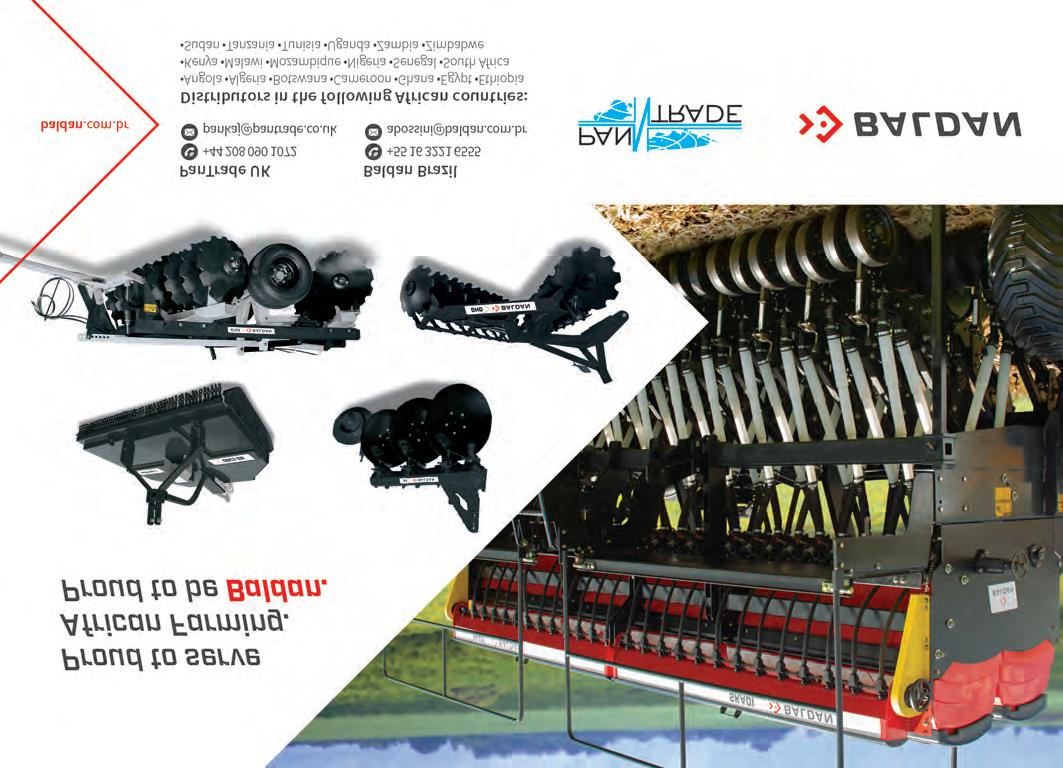
Wideblue, said, "The HCC demonstrates that by applying alternative technologies to new areas of research, in this case agricultural imaging, a low cost solution can be developed. We have lowered the cost by a factor of 10 but the device offers comparable performance to traditional machines.”
"This market disruption model is being applied by Wideblue to a variety of industries including medical, scientific and satellite applications," he added.
Led by Wideblue, the project was a collaboration between Wideblue and the University of Strathclyde, University of the West of Scotland, the James Hutton Institute and Galloway and Macleod. The project was funded by Innovate UK. h
From food to mobility and the technologies that touch our everyday lives, Bühler innovations contribute to create a better world.
Bühler solutions: Improving food production in Africa
BÜHLER IS COMMITTED to overcoming inefficiencies, particularly in African value chains - this was the message given at the company’s Annual Results event, held in Uzwil, Switzerland in February.
According to the Buhler management, sharing knowledge with African partners, producers and farmers to find new, sustainable ways to improve the entire value chain is a priority, along with empowering women who constitute 70 per cent of the entrepreneurs that Buhler works with in Africa. The continent is an important market for Bühler and progress, especially in regard to improving processing, has been made in the past five years. With more than one billion Africans needing access to nutritious food, the potential is enormous.
Reducing waste along the value chain is particularly important, with the example of maize being cited, with 20 per cent losses often reported in the post-harvest stage. This level of wastage makes it more difficult to ensure products are affordably priced, and a way to reduce waste is to introduce optimal sorting processes to get the most out of every maize crop.
Bühler technologies High-end technology has incredible potential to help African value chains become more productive and ensure millions of people can access safe food. This includes optic technology for sorting grains, which can be a cheap processing solution for Africa’s rural economies.
Buhler's LumoVision, an optical sorting application is able to identify and sort corn contaminated with aflatoxin faster and more accurately than has ever been possible. The team designed a hyperspectral camera and powerful LED-based UV lighting system to cut contamination rates by 90 per cent. With these, each kernel is analysed as it passes the machine’s sensors. Contaminated grains that glow brightly under the UV light are blown out of the product stream by air nozzles that deploy within milliseconds of detection.
By connecting LumoVision to the cloud
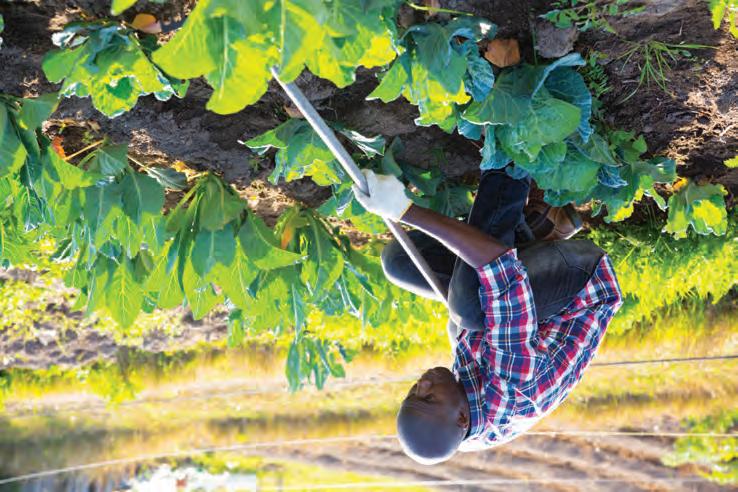
High-end technology has incredible potential to help African value chains become more productive.
via the Bühler Insights platform, which was developed together with Microsoft, it is possible to make a real-time risk assessment of the grains as they are processed. The data collected is securely transmitted to the platform, where it is compared to other data such as the weather conditions under which the corn grew. This data is combined to calculate the risk of contamination for each grain. By comparing the data collected by LumoVision to the data stored in the cloud, it is even possible to assess the risk of aflatoxin occurring in each batch from a certain provider and optimize sorting accordingly. This predictive technology will bring food safety to new levels.
Bühler 's innovative food fortification solutions, such as NutriRice, add an extra
level of quality to this staple food by mixing broken kernels for rice flour production with vitamins and minerals, then adding them to natural whole rice kernels at a set ratio. As a partner in the Food Fortification Initiative, alongside UNICEF and the CDC Foundation, Bühler is working to bring simple, affordable grain fortification processes to mills around the world.
The GrainiGo grain analyser, which uses cloud and IoT technology to enable customers to cut costs, boost yields, and improve quality.
SmartPro, introduced in 2018, is Bühler’s digital service for the wet-grinding process. Through continuous observation of important process parameters, it enables increased traceability, better process control, and benchmarking, which results in significant production optimization. Another innovation, which was prototyped in 2018, is the QuaLiB digital quality management system for lithiumion battery (LIB) electrode slurry production. It monitors the process and product parameters of continuous mixing, enabling the system to immediately respond to changes. QuaLiB increases production yield, improves product consis
tency, enhances traceability, and reduces operational costs for LIB electrode manufacturers.
Investing in the future Education and training is another strategic priority for Buhler in Africa with examples including a cocoa training school based in Abjidan, Côte d’Ivoire, and the milling school in Nairobi, Kenya. Although two thirds of the world’s cocoa beans are grown in West Africa, most chocolate processing still takes place in Europe. Many major chocolate producers – several of them Bühler customers – have plants in the region. Bühler’s new chocolate training hub in Abidjan enables trainees to learn everything they need to know about operating and maintaining Bühler machinery, helping them to create high-quality products, increase yield, and meet Ivory Coast’s target of increasing the local processing of raw cocoa to 50 per cent by 2020.
Bühler’s ongoing involvement in the Partners in Food Solutions is also helping to bring technical and business expertise to millers and food processors in developing countries, while its African Milling School in Nairobi, Kenya – the first facility of its kind on the continent – has been providing trainees with the skills to significantly improve quality, safety, and output since 2015.
Supporting local food production Today, it is astonishing that 80 per cent of all food in Africa is still imported, though Africa has the climate and land needed to grow. However, major food producers such as Dangote in Nigeria have been changing the value chain across Africa. For instance, Dangote, a major food producer in Nigeria has been investing to strengthen the local farming and processing of rice. The process technology from Bühler, including optical

sorting, ensures the safety and high quality of food products. will be safe and highquality.
In Lekki, on the outskirts of Lagos, is the Kellog's factory which has developed processes to significantly reduce waste, energy and water consumption, in conjunction with Buhler technologies.
Bühler commits to technology to improve world Ian Roberts, Bühler’s chief technology officer, addressed the Annual Results event on the topic of “Innovations for a better world” He said that issues such as 70 per cent of maize being used to feed livestock rather than people; and a one per cent global temperature increase has the potential to reduce crop yields by 3.7 per cent, need to be addressed.
“By 2050, we need to produce more food with less land,” Roberts said, explaining that 25 per cent of the world is land, 79 per cent of this is arable and 32 per cent of the arable land is being used for
Buhler innovations ensure safety and high quality food production.
agriculture, and the challenge is to maintain food production for a growing world population using 35 per cent less agricultural land.
“Only 40 per cent of protein from fields lands on a plate,” he told the event.
Transitioning to more plant-based diets is part of the solution, Mr Roberts said, as this will use 50 per cent less energy and water and produce 50 per cent less waste.
He said that Bühler is setting “new, measurable targets” to meet by 2025 and that the company’s customers will hold them to account.
Buhler and Givauden will be joining forces to research plant-based food development at a Singapore-based innovation centre, described as “the Tesla of the food industry”.
Roberts said that “systemic change is needed to move towards plant-based proteins”, with the time being right for developing this sector because of sustainability concerns as well as “huge consumer demand”. h

Hoogendoorn Growth Management’s Harvest Forecast module uses sensor generated data and a more statistical approach for greater accuracy in predicting horticulture harvests.
Data-driven technology enhancing yield prediction
Greenco has applied datadriven growing principles to maximise yields.
THE USE OF artificial intelligence and machine learning in horticulture has enabled more accurate predictions of yield results to help growers around the world.
As a significant step in digitalisation of tomato harvests, Hoogendoorn has made it possible to provide yield prediction with an accuracy of 83 to 93 per cent.
Since its release, multiple large tomato growers in the Netherlands have successfully utilised the harvest forecast module.
The latest version using new techniques such as AI and Machine Learning, was launched in 2018.
Driving Greenco's cultivation strategy Hoogendoorn Growth Management’s Harvest Forecast module is set to enable the international snack vegetable grower Greenco to calculate a harvest forecast one week in advance for the following four weeks. By applying data-driven growing principles, Greenco has developed a new strategy to optimise potential climate conditions in the greenhouses, thus maximising yields.
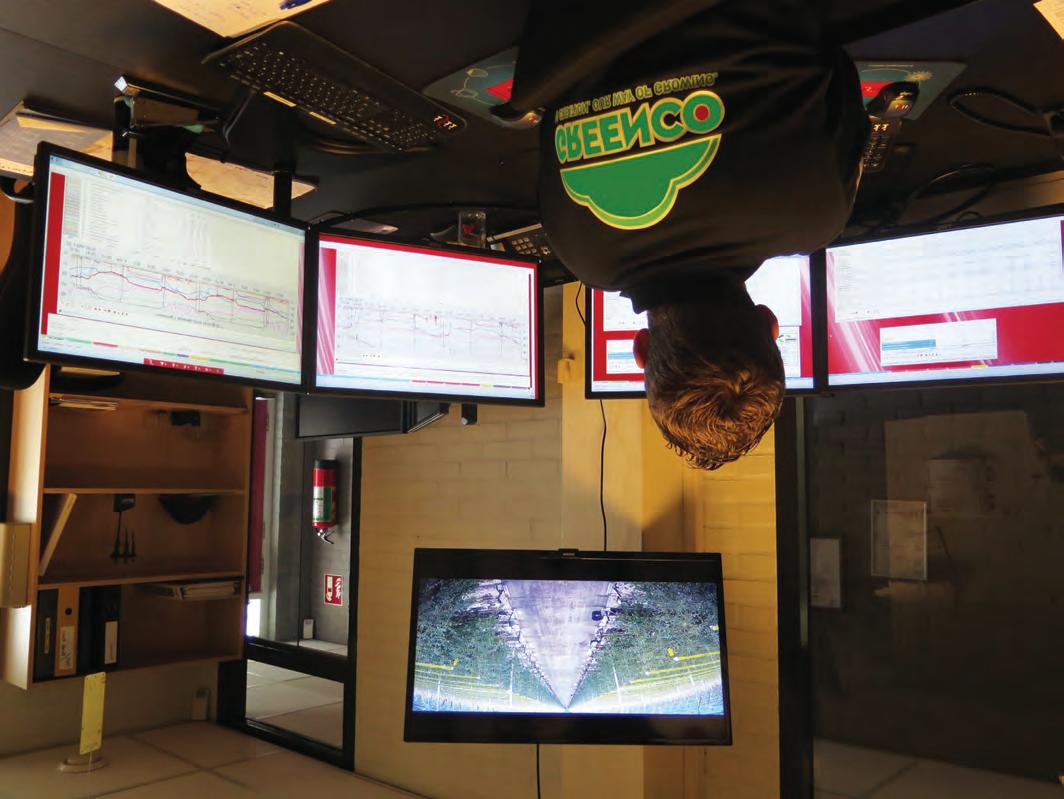
With the data-driven growing strategy, Greenco discovers new insights in plant conditions and plant health.
By combining technology with plant physiology, accurate harvest With the data-driven growing strategy, Greenco discovers new insights in plant conditions and plant health.
forecasts are obtained.
Every year more data can be used by the model, which makes the model even more precise than it already was. Image Credit:Hoogendoorn
Supply and demand There exists an increasing need for a better balance between supply and demand in the horticultural process-chain. Lack of balance between supply and demand causes a disruption in the market. Sometimes the production is too high, other times too low. This results in a not optimal pricing of the product. This can be coordinated much better with a reliable prognosis, which ultimately leads to better pricing. This will lead to fewer mistakes in the market. Besides that, labour efficiency and planning can be optimised, if harvest is predicted accurately h
The technological advancements provided by the Symaga group have been strengthening its product improvements.

Growket’s feed silo optimisation for 2020
GROWKET HAS LAUNCHED an optimisation of its feed silos in compliance with the Eurocode standards. The technical project that has been developed over the last months, has reached an optimised structure, with design conforming to the EU 1.4 norms.
In 2017, the company’s feed silo offering was redesigned according to the Eurocode 1.4 norms. Symaga is the first silo manufacturer to obtain EU certification. Its range of silos was validated from 180-380 metre diameter through the MEF methodology (a method of calculation based on the development of a Finite Element Methodology).
Its range of silos was validated from 180-380 metre diameter through the MEF ( Finite Element Methodology). In 2014, the range was extended, offering 380 meters diameter with 45º and 60º hoppers and increasing the capacity up to 85 cu/m.
Growket increased the steel coating,
Silo 2020 Growket
setting the standard to Z600 designation, providing 37 per cent more protection than other manufacturers.
Further, the Symaga Group manufactures industrial and feed silos in compliance with EN-1090 standards, guaranteeing complete reliability.
In order to complete the feed silo line, Growket offers a line of accessories and flex auger, chain, and auger transport system.
Growket is a part of the Symaga Group, a leading manufacturer of industrial silos made of galvanised corrugated steel. The Symaga Group is working to position Growket, as one of the main feed silo manufacturers of corrugated steel and transport system. h
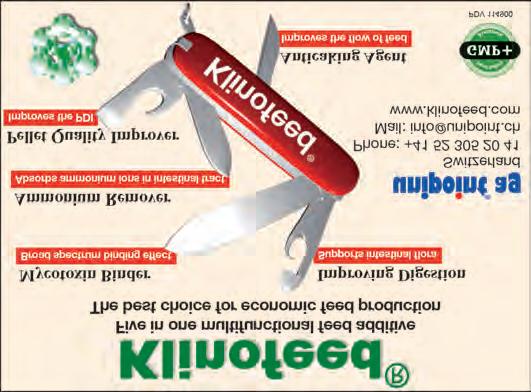
MAURITIUS PORTS AUTHORITY (MPA) will construct a fishing port and breakwater structures, improving fishing operations and rationalising the parking of idle fishing vessels.
A budget of US$40mn has been earmarked for the project which will provide a sheltered basin to ensure a secure mooring place for approximately 120 ocean fishing vessels. The facility will include a service quay of 50 metres.
CWP Engineering Ltd FZ LLC, which is providing the consultancy services, has completed the preliminary planning and is proceeding with the detailed design of the preferred development option.
The bids have been launched geotechnical investigations and survey works which are necessary for firming up the detailed designs. Mauritius building fishing port at Fort William
GERMAN CHEMICAL COMPANY BASF and Italy-based industrial manufacturer of machines and films for food packaging Fabbri Group have developed a sustainable solution for cling film used in fresh-food packaging.
Based on BASF’s certified compostable ecovio, Fabbri Group produces the transparent stretch film Nature Fresh. Meat, seafood, fruits and vegetables can be wrapped manually or with automatic packaging equipment, along with industrial stretch packaging. The film helps to keep food fresh for a longer period of time when compared to polyvinyl chloride (PVC) alternatives used for cling film such as polyethylene (PE).
After using, Nature Fresh can be composted together with other food waste in home compost or industrial compost according to national legislation. It enables organic recycling and helps to close the nutrient loop towards a circular economy. Carsten Sinkel from global business development biopolymers at BASF said, “PE films are lacking in performance, often leading to the reduced shelf life of packed fresh food. This results in considerable greenhouse gas emissions from food waste.”
Stefano Mele, CEO at Fabbri Group, commented that the Nature Fresh solution is combined with the Automac NF wrappers. With this, the food packaging industry is benefitted. “In this way, our certified compostable cling film can be used together with trays and labels of the same kind in order to have a complete compostable packaging,” he added.
ADVERTISERS INDEX
Company .................................................................Page
AGI ................................................................................25
Carfed SA......................................................................11
CELLI S.p.A ..................................................................36
CNH Industrial Österreich GmbH ...................................7
Evonik Nutrition & Care GmbH .....................................13
Malaysian Vaccines and Pharmaceuticals Sdn Bhd.......9
MONOSEM ...................................................................17
Pan Trade Services Ltd.................................................29
Prive S.A. ......................................................................31
Swingtec GmbH ..............................................................2
Subscription Form
I wish to subscribe to AFRICAN FARMING AND FOOD PROCESSING for 1 year (6 issues) starting with the next Issue.
Europe a 94.50, Kenya Ksh1500, Nigeria N2800,
South Africa R210, United Kingdom £57, USA $111 Enclosed is my cheque/draft. ❑ Please send us the invoice ❑ Please debit my: Amex ❑ Visa ❑ Mastercard ❑
Card number: oooo oooo oooo oooo Expiry date: oo/oo Security Code: ooo (Please note that we will debit your account in sterling).
Name .............................................................................................. Position ..............................................
Organisation ............................................................................................................................... ................
Telephone............................................................ Fax ................................................................................
Address ............................................................................................................................... ..........................
Country............................................................................. Email ................................................................
Signed ............................................................................... Date ................................................................
Send this subscription form by airmail together with cheque payable to: Alain Charles Publishing Ltd, University House, 11-13 Lower Grosvenor Place London, SW1W 0EX, UK
Subscription order can also be placed via the web: www.alaincharles.com or email at circulation@alaincharles.com
YOUR BUSINESS
Government/Public/Diplomatic Services Education/Research Institutes Commercial Services
Import/Export Agents, Distributors Farms & Plantations Food Processing Aid Organisations Agricultural Equipment & Material Manufacturers Others, Please specify ............................... ..................... ................................................ ..................... ................................................ ..................... ................................................ 01 03 06 08 09 11 12 13 16
Digitally-enabled platforms help farmers market their produce better.
Selina Wamucii integrates its platform to agribusiness groups and cooperatives helping farmers from any African country reach buyers across the globe.

Enabling direct market access for African farmers
SELINA WAMUCII, A platform that helps businesses around the world to buy and import food and agricultural produce from any African country has announced that it is opening up its platform to organised farmers groups and cooperatives to sell or export directly to markets worldwide.
“Selina Wamucii now welcomes farmer groups, associations, processors and cooperatives based in any African country to sign up by visiting selinawamucii.com and start selling their produce directly to a large selection of interested buyers from around the world who are already using our platform”, said John Oroko, the company’s CEO.
Farmers can sell directly on the Selina Wamucii platform as registered, organised
“The platform uses technologies including artificial intelligence, data and algorithms to streamline the extremely fragmented agricultural supply chains across entire Africa," said John Oroko, CEO, Selina Wamucci.
groups. The platform enables farmers to control the entire process from growing, harvesting to supplying directly to local markets right in their countries, within Africa (intra-Africa) or even export directly by themselves to any market worldwide.
Among the requirements for farmers to sign up is that the farmers need to be organised in groups of active members with the group having a clear leadership structure in place.
"At Selina Wamucii, we believe all farmers and other producers should be seamlessly connected to markets anywhere in the world regardless of geographical limitations, size of farm, facilities or resources. That is why we are building the first truly pan-African platform for food and agricultural produce. The platform uses technologies including artificial intelligence, data, and algorithms to streamline the extremely fragmented agricultural supply chains across entire Africa," Oroko added. "Our platform is now accessible to farmers in every corner of the African continent who will now be able to easily take to market a wide range of Africa’s food and agricultural produce. From Cape Verde's mackerel sourced by local fishermen to Madagascar's vanilla grown by family farmers, we are building a marketplace that connects producers to market opportunities regionally and globally, ultimately unlocking opportunities that fuel economic prosperity for millions of farmers and other food producers across the African continent," he said.
About Selina Wamucii Selina Wamucii is a platform that helps businesses from anywhere in the world to easily source, buy or import food and agricultural produce from any African country with ease. It simplifies sourcing, payments, and logistics while guaranteeing trust for buyers and producers. The platform now integrates with cooperatives, farmers groups, agro-processors and other organizations that work directly with family farmers including smallholder farmers, pastoralists and fishing communities to form a valuable link to markets around the world.
Selina is putting all Africa’s producers and their products in one platform where buyers can reliably find and buy produce from Africa.
Technology has touched every aspect of life and agriculture has been no exception. For smallholder farmers, platforms such as these offers plenty of opportunities to market their produce to wider markets and increase the profit margins. h
